 W
WThe Machchhu dam failure or Morbi disaster was a dam-related flood disaster which occurred on 11 August 1979, in India. The Machchu-2 dam, situated on the Machchhu river, burst, sending a wall of water through the town of Morbi of Gujarat, India. Estimates of the number of people killed vary greatly ranging from 1800 to 25000 people.
 W
WThe 1992 India–Pakistan floods was a deadliest flood caused by a five days long heavy monsoon rains and severe weather that occurred on 7 September 1992 across the north-Pakistan of Azad Kashmir, North-West Frontier Province and Indian administered state of Jammu and Kashmir. Severe floods left more than 2,500 fatalities, including 2,000 deaths in Pakistan administered state, 300 in Punjab province, and 200 in India administered state with several other missing. The floods swept away more than 12,672 villages and several people were buried alive due to landslides near mountains. Punjab, that shares its borders with Azad Kashmir, suffered a heavy agriculture loss in its economic history.
 W
WThe 1993 India floods was a deadliest food caused by several days long heavy monsoon rains and severe weather that occurred in July 1993 across eight states in the north of the country. Severe floods left 530 fatalities and millions people went homeless, including from Haryana. Punjab with 350 deaths was the most affected state where "1.2 million acres of crops" were extensively damaged, mostly from Patiala, north-western region of the state. Flash floods swept away major railway tracks, roads, and bridges, leading to disrupt the communications between the northeastern states and the rest of the country. Initial reports cited one hundred deaths in Gujarat.
 W
WThe 2005 Gujarat floods, during the monsoon season, affected the state of Gujarat, India, that included 20 districts, with 10 of them severely affected. 117 of the 225 Tehsils, 11 cities were included, and more than 7,200 villages inundated, with up to 10,000 affected. The cumulative 505 millimetres (19.9 in) of rain left approximately 176,000 people homeless during the flooding that included the drowning of a rare Asiatic lion from the Gir wildlife sanctuary. At least 173 people were killed in the flooding.
 W
WThe 2006 Surat flood occurred over 7–10 August 2006, which affected Surat, India, and nearby villages. About 80–95% of Surat was flooded.
 W
WThe 2007 South Asian floods were a series of terrible floods in India, Nepal, Bhutan, Pakistan and Bangladesh. News Agencies, citing the Indian and Bangladeshi governments, place the death toll in excess of 2,000. By 3 August approximately 20 million had been displaced and by 10 August some 30 million people in India, Bangladesh and Nepal had been affected by flooding.
 W
WThe 2009 India floods affected various states of India in July 2009, killing at least 36 people in Orissa and 13 in Kerala. The most affected states were Karnataka, Orissa, Kerala, Gujarat and North-East Indian states.
 W
WThe 2010 Ladakh floods occurred on 6 August 2010 across a large part of Ladakh, then part of the state of Jammu and Kashmir. 71 towns and villages were damaged, including the main town in the area, Leh. At least 255 people are reported to have died, six of whom were foreign tourists, after a cloudburst and heavy overnight rains triggered flash floods, mudflows, and debris flows. 200 people were reported missing in the initial aftermath of the storm, and thousands more were rendered homeless after the flooding caused extensive damage to property and infrastructure. Overall, 9000 people were directly affected by the event.
 W
W2012 Himalayan flash floods are the floods that occurred on the midnight of 3 August 2012 in the Himalayan region of Northern Indian states. Many were dead and missing. Many places were affected. Landslides and flash floods were triggered by a sudden cloudburst which left 31 people dead while 40 are reported to be missing.
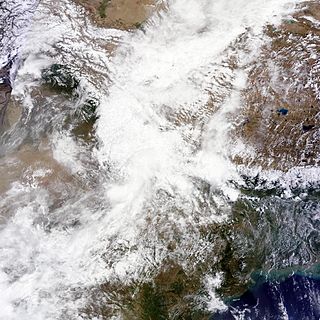 W
WIn June 2013, a multi-day cloudburst centered on the North Indian state of Uttarakhand caused devastating floods and landslides becoming the country's worst natural disaster since the 2004 tsunami. The reason the floods occurred was that the rainfall received was on a larger scale than the regular rainfall the state usually received. The debris blocked up the rivers, causing major overflow. The main day of the flood was 16 June 2013. Though some parts of Himachal Pradesh, Haryana, Delhi and Uttar Pradesh in India experienced the heavy rainfall, some regions of Western Nepal, and some parts of Western Tibet also experienced heavy rainfall, over 89% of the casualties occurred in Uttarakhand. As of 16 July 2013, according to figures provided by the Government of Uttarakhand, more than 5,700 people were "presumed dead." This total included 934 local residents.
 W
WIn September 2014, the Kashmir region suffered disastrous floods across many of its districts caused by torrential rainfall. The Indian state of Jammu and Kashmir, as well as the Pakistani territories of Azad Kashmir, Gilgit-Baltistan and Punjab were affected by these floods. By 24 September 2014, nearly 277 people in India and about 280 people in Pakistan had died due to the floods.
 W
WThe 2015 South India floods resulted from heavy rainfall generated by the annual northeast monsoon in November–December 2015. They affected the Coromandel Coast region of the South Indian states of Tamil Nadu and Andhra Pradesh. More than 500 people were killed and over 1.8 million people were displaced. With estimates of damages and losses ranging from nearly ₹200 billion (US$3 billion) to over ₹1 trillion (US$14 billion), the floods were the costliest to have occurred in 2015, and were among the costliest natural disasters of the year.
 W
WDeep Depression ARB 02 was a weak tropical cyclone which brought heavy rains and flooding to the Indian state of Gujarat in June 2015. It was the third tropical cyclone and second deep depression of the 2015 North Indian Ocean cyclone season.
 W
WFollowing heavy rain, Gujarat state of India was affected by the flood in July 2015. The flood resulted in at least 72 deaths.
 W
WFollowing heavy rain in July 2017, the Indian state of Gujarat was affected by severe flooding. The floods were reported to have caused total 224 deaths between 1 June and 31 July 2017. 16 people had died in neighbouring Rajasthan state by 31 July.
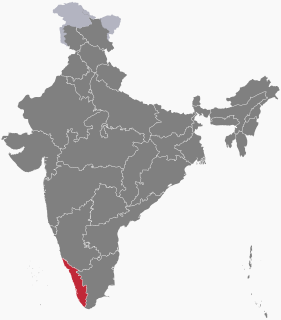 W
WOn 16 August 2018, severe floods affected the south Indian state Kerala, due to unusually high rainfall during the monsoon season. It was the worst flood in Kerala in nearly a century. Over 483 people died, and 140 are missing. About a million people were evacuated, mainly from Chengannur, Pandanad, Edanad, Aranmula, Kozhencherry, Ayiroor, Ranni, Pandalam, Kuttanad, Malappuram, Aluva, Chalakudy, Thrissur, Thiruvalla, Eraviperoor, Vallamkulam, North Paravur, Chellanam, Vypin Island and Palakkad. All 14 districts of the state were placed on red alert. According to the Kerala government, one-sixth of the total population of Kerala had been directly affected by the floods and related incidents. The Indian government had declared it a Level 3 Calamity, or "calamity of a severe nature". It is the worst flood in Kerala after the great flood of 99 that took place in 1924.
 W
WOn 1 August 2019, first week, due to heavy rainfall in the Monsoon season, severe flood affected the southern Indian State of Karnataka. As a security measure in the prevailing situation of heavy rains, India Meteorological Department issued Red alert to several regions of coastal and malnad regions of Karnataka state.
 W
WOn 8 August 2019, due to heavy rainfall in the Monsoon season, severe flood affected Kerala. As a security measure in the prevailing situation of heavy rains, the India Meteorological Department had issued Red alert in the 9 districts in Northern and Central Kerala, orange alert in 3 districts of Central Kerala, and yellow alert in the 2 districts of southern Kerala. Thousands of people have been evacuated to safer places and relief camps. A total of 121 people have died due to rain-related incidents as of 19 August 2019.
 W
WBetween 25–28 September 2019, Pune, India, and its division received a heavy amount of rainfall which caused flash flooding. In addition to people lost to these floods, other rain-related incidents such as collapsed compound walls of buildings have killed at least 21 people. Three NDRF teams along with the Army was deployed in the district for rescue operations.
 W
WDue to heavy rain in July–August 2019, the city of Vadodara and its administrative district in the Indian state of Gujarat were affected by severe flooding. On 31 July 2019, nearly 50 cm of rain fell on Vadodara within 12 hours, with 424mm recorded in one 6 hour period. As a result, the nearby Vishwamitri River rose to 1 metre below the danger line and the Ajwa dam overflowed, flooding the city.
 W
W2020 Assam floods refers to the significant flood event of the Brahmaputra River in the Indian north-eastern state of Assam and coincided with the COVID-19 pandemic. Initial flooding started in May 2020 due to heavy rainfall affecting 30,000 and destroying crops across 5 districts. As of October 2020 the floods affected over five million people, claiming the lives of 123 people, with an additional 26 deaths due to landslides, 5474 villages were affected and over one hundred and fifty thousand people found refuge in relief camps.
 W
WOn 7 August 2020, due to heavy rainfall in the monsoon season, severe floods affected Kerala, India. The floods resulted in the death of at least 22 people. Kerala was also flooded in 2018 and 2019. Heavy rains in Idukki have caused severe landslide in Munnar in which at least 52 people died and nearly 19 were reported missing. As a security measure during the prevailing situation of heavy rains, the India Meteorological Department issued a red alert for the 3 districts of Wayanad, Kozhikkode and Idukki. An orange alert was also issued for five districts. On the same day, the Air India Express Flight 1344 carrying 191 people crashed in Kerala, resulting in the death of 18 people and the wounding of several others. This was because the runway of Calicut airport was flooded and visibility was less because of heavy rain. On 9 August 2020, 49 people died during a landslide at a tea plantation in Rajamala. The state is reeling under damage to property worth Rs 19,000 crore, death of people, livestock and heavy loss to agriculture, especially in Kuttanad, Alappuzha, also known as ‘Kerala’s Rice Bowl’ and the state has submitted a comprehensive plan to Central government to improve the disaster management capacity of the state.
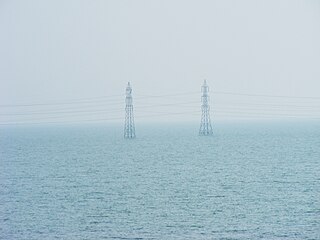 W
WBihar is India's most flood-prone state, with 76% population in the North Bihar living under the recurring threat of flood devastation. Bihar makes up 16.5% of India's flood affected area and 22.1% of India's flood affected population. About 73.06% of Bihar's geographical area, ie 68,800 square kilometres (26,600 sq mi) out of 94,160 square kilometres (36,360 sq mi), is flood affected. On an annual basis, they destroy thousands of human lives apart from livestock and assets worth millions. In total, they have claimed 9,500 lives since the government started publishing figures in 1979. North Bihar districts are vulnerable to at least five major flood-causing rivers during monsoon – Mahananda River, Koshi River, Bagmati River, Burhi Gandak River and Gandak – which originate in Nepal. Some south Bihar districts have also become vulnerable to floods from Son, Punpun and Phalgu rivers. The 2013 flood affected over 5.9 million people in 3,768 villages in 20 districts of the state. 2017 flood affected 19 districts of North Bihar killing 514 people. and affecting 1.71 crore people.
 W
WThe 'Durmi Lake dam-burst' was a flood in Garhwal Region of India in 1894 caused by a landslide induced temporary lake. People often used to call it Birahi Tal but it has nothing to do with the name Birahi or Gohna as the lake was formed at Durmi Village thus the real name of lake was Durmi lake as mentioned by HG Walton in his book British Garhwal Gazetteer in 1910. thumb
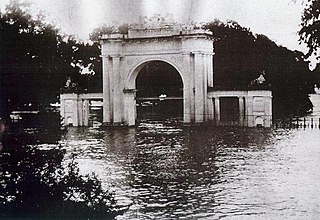 W
WThe Great Musi Flood was a devastating flood that occurred on 28 September 1908 in Hyderabad on the banks of Musi river. The city of Hyderabad was the capital of the Hyderabad State, ruled by the Nizam, Mir Mahbub Ali Khan.
 W
WIn the wake of heavy monsoon rain and flash floods in Jammu and Kashmir, which allegedly killed over four hundred and rendered hundreds of thousands homeless, the Indian Armed Forces were deployed in increasing numbers starting 2 September 2014 to conduct search, rescue, relief, relocation, humanitarian assistance and rehabilitation missions in Jammu and Kashmir. By 18 September, over 200,000 people were rescued from the various parts of Jammu and Kashmir by the Armed forces. The Jammu and Kashmir floods, the worst in a century according to Omar Abdullah, the Chief Minister of Jammu and Kashmir, paralyzed the state government. Omar Abdullah, responding to public criticism, told the media "I had no government" in the first few days following the floods, as "My secretariat, the police headquarters, the control room, fire services, hospitals, all the infrastructure was underwater." Adding "I had no cell phone and no connectivity. I am now starting to track down ministers and officers." The Jammu and Kashmir floods of 2014 have been blamed on heavy rainfall, about 8 inches (200mm) on 4 September alone, on climate change, unplanned and uncontrolled development, encroachment of river banks, lakes, ponds, and massive loss of wet lands, absence of local government flood forecasting system, and poor governance. The Armed Forces humanitarian assistance mission in response to the floods was named Mission Sahayata (assistances). Northern Command's humanitarian assistance to Civil authorities was named 'Operation Megh Rahat'. The Indian Army, Air Force, and the Navy, committed large resources to the assistance mission including over 30,000 troops, 15 engineer task forces, 84 Indian Air Force and Army Aviation Corps fixed wing transport aircraft and helicopters, naval commandos and rescue specialists, and Base Hospital, four field hospitals, over 106 medical detachments. "Operation Megh Rahat", ended on 19 September 2014, but "Operation Sadbhavna", the relief and medical assistance support, according to government press release, will continue in "close synergy with the civil administration and the police".
 W
WThe 2017 Mumbai flood refers to the flooding that occurred on 29 August 2017, following heavy rain on 29 August 2017 in Mumbai. Transport systems were unavailable through parts of the city as trains and roadways were shut. Power was shut off from various parts of the city to prevent electrocution. The International Federation of Red Cross and Red Crescent Societies (IFRC) called the South Asian floods one of the worst regional humanitarian crises in years. This event can be compared with the 2005 floods in Mumbai, which recorded 944 mm of rainfall within 24 hours on 26 July.
 W
WOperation Surya Hope was the Indian Army’s Central Command response to the June 2013 North India floods in Uttarakhand. The Uttarakhand flood was caused by record off-season monsoon rains, cloud burst, floods, flash floods, and glacial lake outburst floods (GLOFs), which were possibly induced by climate change. The humanitarian disaster affected millions, stranded over 100,000 pilgrims and tourists in Himalayan religious sites, and killed several thousand people. The Indian Army's Lucknow based Central Command conducted the operation. Surya or Sun, is the emblem of the Central Command and features prominently on the Command's formation sign and flag, which is probably why Central Command chose to name the effort Operation Surya Hope.
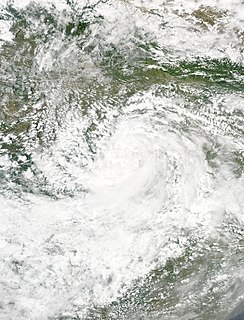 W
WFollowing heavy rain in July and August 2017, the Indian state of West Bengal was affected by severe flooding. The floods were reported to have caused 50 deaths since 1 August and 8 deaths in the neighbouring state of Jharkhand.